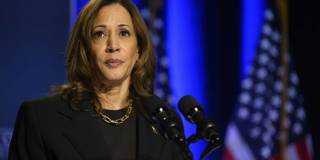Although some of Kamala Harris’s policy proposals remain vague, there is little question that her fiscal, trade, climate, immigration, currency, and China policies would be quite different from her opponent’s. Donald Trump’s agenda is much more likely to cause inflation, reduce economic growth, and blow up the federal budget.
NEW YORK – With polls suggesting that Kamala Harris has at least a 50% chance of winning next month’s US presidential election, questions about her economic-policy agenda have come to the fore. Of course, much will also depend on down-ballot outcomes. If the Democrats were to win the White House and both houses of Congress, they could implement fiscal policies with a simple majority (through the so-called budget-reconciliation process). Otherwise, a Harris administration obviously would be more constrained.

NEW YORK – With polls suggesting that Kamala Harris has at least a 50% chance of winning next month’s US presidential election, questions about her economic-policy agenda have come to the fore. Of course, much will also depend on down-ballot outcomes. If the Democrats were to win the White House and both houses of Congress, they could implement fiscal policies with a simple majority (through the so-called budget-reconciliation process). Otherwise, a Harris administration obviously would be more constrained.